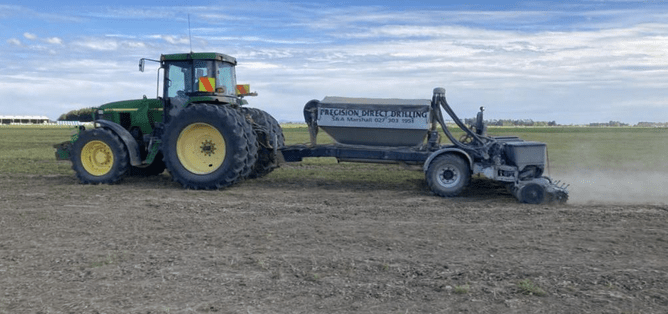We have just entered the really challenging stage of the season for our lower-impact farmlets. First round N is run out and the next application is 3 plus weeks away, ryegrass is heading, first-round silage paddocks are coming back into the grazing window and growth is erratic. This week we have paddocks too long for our current rotation length that need to be stepped over but we can see a potential deficit in 7-10 days' time. After lots of debate we decided to get cows grazing paddocks at the right pre-graze mass was the priority so have skipped paddocks and are prepared to add supplements in 7-10 days' time if necessary. We often get criticised for feeding supplements when you have paddocks out for conservation, however, for the lower impact systems this is sometimes a necessity as we don't have the luxury of lots of N in the system to grow us out of a deficit.
Key Decisions this week:
• We will be proactively managing pre-graze targets and residuals to keep seedhead and pasture quality under control, especially with the range in pasture cultivars across the farm.
• Stepped over x2 paddocks in each of the LI farmlets and identified potential paddocks for conservation in the Std farmlets however the Std pdks will be brought back into the rotation if growth drops as we are currently just growing demand for these herds.
• The weather window is not great for making baleage over the next week so we have been conservative with the number of paddocks stepped over
• There are 66 cows that have been flagged for vet checking Friday. 56 of these will potentially be getting CIDR’s put in due to having no recorded heat despite being more than 42 days post-calving. The remaining 10 are due for metri-checking and cured if required.
• N - as N Protect will continue to follow the cows on the Std farmlets
• An additional 33 lighter conditioned, scruffy looking cows have been put onto OAD but remain in their herds
• After a couple of cases of tetany/milk fever last week we have recommenced dusting MgO (80 g/cow) and limeflour (100 g/cow)
General Notes
o Spray contractors have sprayed 8 paddocks for scotch thistles and the team will continue to use prills to control other thistles
o The last effluent hydrants have been installed on Thursday and now the effluent line has been completed, with 115ha now being the total area for effluent application.
o The new drainage mentioned last week has now been completed. In addition, 3 soak holes have been dug in various paddocks with wet low-lying areas using a 900mm wide auger piece, down to a depth of 7-8 metres. These will be filled with gravel and hopefully solve the ponding issues in these paddocks.
o Next winter's fodder beet has been sown with minimal (strip-till and direct drill) paddocks completed on Friday and the precision direct drilled paddocks sown on Monday.
• 6 out of the 8 paddocks coming out of crop and going into permanent pastures have now been sown. Of the 2 remaining, one still needs to be levelled and the other which has only recently had its remaining FB lifted still needs to be ripped, harrowed etc before it will be sown.
• All baleage that is made is identified and marked according to farmlet and quality and then allocated for different parts of the season accordingly. For example, tidying up paddocks or toppings will be used on crops over winter, good quality will be earmarked for milker baleage next spring and the remainder for autumn feeding.
• This week, DNA samples were collected from all the calves, they received their first drench of “Arrest C” and have been vaccinated with Covexin and also for Lepto. There are still 84 calves yet to be weaned
• Maintenance fertilizer is continuing to go on with only 6 paddocks left waiting for this application.
• Milk production for all herds, but especially the kale herds, has eased over the last week putting us behind on a daily basis compared with last season for the first time. It looks like the drop related to seedhead emergence and pasture quality decline has come to a couple of weeks earlier this season.
Animal Health Update
• Looking back at the animal health data through spring there were some differences between the herds
o Std FB herd had the most animal health incidences recorded with 11% of the herd treated through calving
o Cows wintered on fodder beet had more treatments for metabolic disease with approx. 5.5% receiving treatment compared with only 3% of the kale herds
• Season to date we have treated 7-9% of each herd for lameness and 5.5 to 9.7% for mastitis. Interestingly the Std FB herd have had the highest incidence of both these animal health issues. Kale cows had a higher incidence of lameness while on crop.
Click the link below to download our full weekly notes


